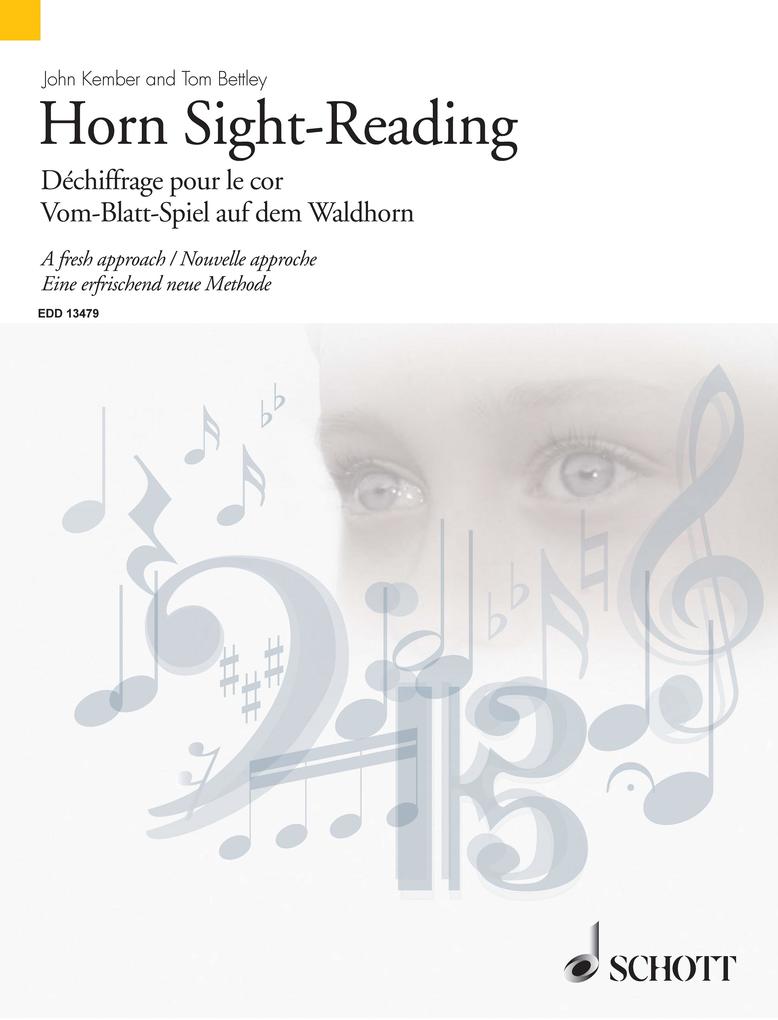
Sofort lieferbar (Download)
This collection of original tunes presents 193 carefully graded sight-reading pieces and exercises in a range of musical styles. Taking an approach based on self-learning, the 11 sections of the book focus on developing different key technical skills as well as introducing the student to a plethora of musical terms.
Each section of the book contains solos, as well as horn duets and pieces with piano accompaniment for practising ensemble sight-reading. Suitable for preliminary, to advanced level students. Part of the comprehensive Sight-Reading series published by Schott and edited by John Kember.
Each section of the book contains solos, as well as horn duets and pieces with piano accompaniment for practising ensemble sight-reading. Suitable for preliminary, to advanced level students. Part of the comprehensive Sight-Reading series published by Schott and edited by John Kember.
Inhaltsverzeichnis
To the pupil: why sight-reading? - Section 1: Notes C and D - Solos - Duets - Accompanied pieces - Section 2: Notes C-G, 4/4 und 2/4 time, introducting slurs - Solos - Duets - Accompanied pieces - Section 3: Notes E and F, new keys G major, C und E minors. Introducing 3/4 time and the dotted rhythm - Solos - Duets - Accompanied pieces - Section 4: Range A-A, new keys E and D minor, D major, introducting, 3-time, quavers and dotted rhythms - Solos - Duets - Accompanied pieces - Section 5: Range A-C. New Notes C and D. Keys of A minor, A major, F major and B major - Solos - Duets - Accompanied pieces - Section 6: New Keys: E and A major. New time signatures of 3/8, 6/8 and 9/8 - Solos - Duets - Accompanied pieces - Section 7: All keys up to 4's and 4's. Triplets in simple time. 5/4, 5/8, 7/4 and 3/2 - Solos - Duets - Accompanied pieces - Section 8: Transposing down a tone as for Horn in E. Semiquavers and some chromatic movement - Solos - Duets - Accompanied pieces - Section 9: Further transposition. Syncopation - Solos - Duets - Accompanied pieces - Section 10: Transpositons of a minor 3rd and perfect 5th. Chromatic and modal tonalities - Solos - Duets Accompanied pieces - Section 11: Baroque to Atonal. Double sharps abd double flats - Solos - Duets - Accompanied pieces - Glossary
Mehr aus dieser Reihe
Produktdetails
Erscheinungsdatum
03. September 2020
Sprache
englisch, deutsch
Seitenanzahl
92
Dateigröße
2,26 MB
Reihe
Schott Sight-Reading Series
Autor/Autorin
Tom Bettley, John Kember
Verlag/Hersteller
Kopierschutz
mit Wasserzeichen versehen
Family Sharing
Ja
Produktart
EBOOK
Dateiformat
PDF
ISBN
9783795799823
Entdecken Sie mehr
Bewertungen
0 Bewertungen
Es wurden noch keine Bewertungen abgegeben. Schreiben Sie die erste Bewertung zu "Horn Sight-Reading" und helfen Sie damit anderen bei der Kaufentscheidung.

































